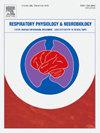屏气潜水作为一种工具,利用有益的增加心脏迷走神经张力。
IF 1.6
4区 医学
Q3 PHYSIOLOGY
引用次数: 0
摘要
在这里,我们回顾了介导潜水性心动过缓的中枢机制,并提出屏气潜水(BH-D)是改善心脏迷走神经张力(CVT)的有力治疗工具。CVT的生理波动被称为呼吸性心率变异性(呼吸性心率变异性),涉及两种与呼吸相关的脑干机制。吸气时pre-Bötzinger复合体(pre-BötC)神经元抑制心脏迷走神经运动神经元增加心率,随后心脏迷走神经解除抑制,心率降低与呼气早期Kölliker-Fuse (KF)核介导的部分声门收缩有关。KF和pre-BötC都接受直接下行皮质输入,这可能介导意志声门关闭,作为在BH-D期间产生CVT的意志目标脑干回路的关键解剖框架。因此,我们表明,在BH-D期间,意志和反射性声门关闭使呼吸hrv核心网络通过来自鼻子和前额的会聚三叉神经传入输入来调节潜水性心动过缓。在常规训练后,与长时间的BH-D相关的额外感觉输入进一步增加了急性潜水期间的CVT,并可能导致CVT的长期增加。总之,在呼吸hrv /BH-D核心回路中Hebbian可塑性的证据进一步支持了这样一种观点,即定期的BH-D锻炼可以产生永久性的CVT增加,特别是通过参与呼吸hrv产生的突触的敏化。与其他常规的身体活动相反,据报道,BH-D运动不会引起心脏结构重塑,因此我们建议,定期的BH-D运动可以作为一种拯救和非侵入性的方法来治疗交感神经亢进,特别是对于有心血管易感性的老年患者。本文章由计算机程序翻译,如有差异,请以英文原文为准。
Breath-hold diving as a tool to harness a beneficial increase in cardiac vagal tone
Here we review central mechanisms that mediate the diving bradycardia and propose that breath-hold diving (BH-D) is a powerful therapeutic tool to improve cardiac vagal tone (CVT). Physiological fluctuations in CVT are known as the respiratory heart rate variability (respirHRV) and involve two respiratory-related brainstem mechanisms. During inspiration pre-Bötzinger complex (pre-BötC) neurons inhibit cardiac vagal motor neurons to increase heart rate and subsequently cardiac vagal disinhibition and a decrease in heart rate is associated with a Kölliker-Fuse (KF) nucleus-mediated partial glottal constriction during early expiration. Both KF and pre-BötC receive direct descending cortical inputs that could mediate volitional glottal closure as critical anatomical framework to volitionally target brainstem circuits that generate CVT during BH-D. Accordingly we show that volitional and reflex glottal closure during BH-D appropriates the respirHRV core network to mediate the diving bradycardia via converging trigeminal afferents inputs from the nose and forehead. Additional sensory inputs linked to prolonged BH-D after regular training further increase CVT during the acute dive and can yield a long-term increase in CVT. Centrally, evidence of Hebbian plasticity within respirHRV/BH-D core circuit further support the notion that regular BH-D exercise can yield a permanent increase in CVT specifically via a sensitization of synapse involved in the generation of the respirHRV. Contrary to other regular physical activity, BH-D reportedly does not cause structural remodeling of the heart and therefore we suggest that regular BH-D exercise could be employed as a save and non-invasive approach to treat sympathetic hyperactivity, particularly in elderly patients with cardio-vascular predispositions.
求助全文
通过发布文献求助,成功后即可免费获取论文全文。
去求助
来源期刊
CiteScore
4.80
自引率
8.70%
发文量
104
审稿时长
54 days
期刊介绍:
Respiratory Physiology & Neurobiology (RESPNB) publishes original articles and invited reviews concerning physiology and pathophysiology of respiration in its broadest sense.
Although a special focus is on topics in neurobiology, high quality papers in respiratory molecular and cellular biology are also welcome, as are high-quality papers in traditional areas, such as:
-Mechanics of breathing-
Gas exchange and acid-base balance-
Respiration at rest and exercise-
Respiration in unusual conditions, like high or low pressure or changes of temperature, low ambient oxygen-
Embryonic and adult respiration-
Comparative respiratory physiology.
Papers on clinical aspects, original methods, as well as theoretical papers are also considered as long as they foster the understanding of respiratory physiology and pathophysiology.

 求助内容:
求助内容: 应助结果提醒方式:
应助结果提醒方式:


